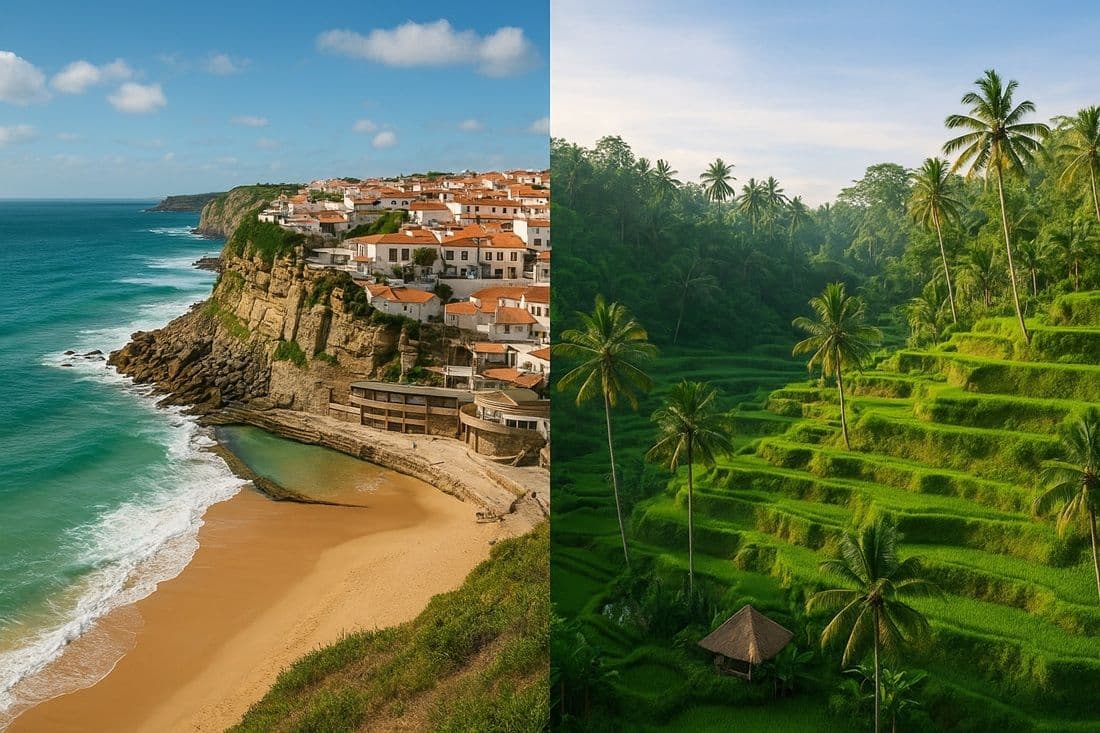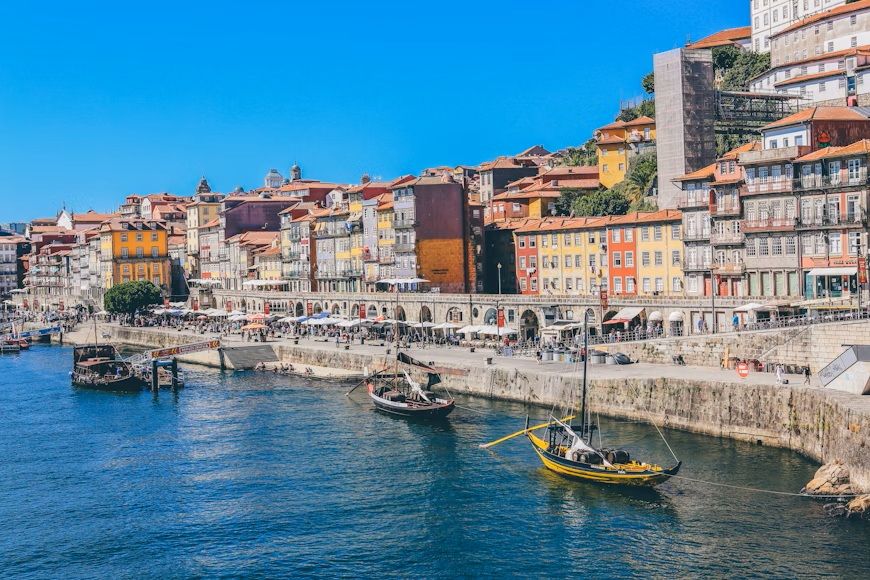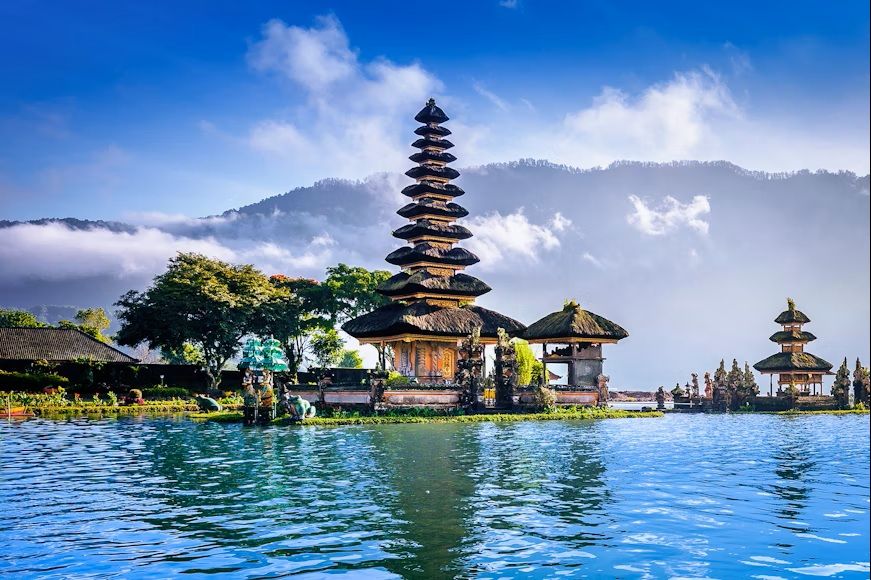Ask GRAI Anything
Your Real Estate Questions, Answered Instantly via Chat


Help us make GRAI even better by sharing your feature requests.

Paradise used to be an escape. In 2015, you could sell your condo in London or Los Angeles, buy a villa in Bali or an apartment in Lisbon, and live on half your old expenses.
In 2025, that same dream comes with fine print: rising insurance bills, visa restrictions, and climate volatility.
The world’s favorite destinations are now case studies in how sunshine and policy can turn from assets into risks.
Portugal: The Atlantic on Fire
Portugal was Europe’s pandemic-era darling. Remote workers, retirees, and investors poured in - attracted by 300 days of sun and one of the EU’s most accessible visa programs. But the climate math changed.
Average temperatures now 3°C higher than the 1981-2010 baseline.
The country endured three record-breaking heat waves in 2024-25, hitting 45°C in Alentejo.
Wildfire damage exceeded €1.2 billion last summer.
The insurance market reacted fast. According to Swiss Re’s 2025 Global Insurance Outlook, property premiums in southern Europe have risen 34% since 2020, driven largely by wildfire and storm claims.
Meanwhile, the end of Portugal’s Golden Visa property route (2024) and tightening of its Digital Nomad Visa have slowed foreign transactions by 28% YoY- yet rents remain near record highs.
Paradise, in Portugal, now costs more and covers less.

Bali: Paradise Meets Policy
In Southeast Asia, Bali is facing its own paradox. Tourism and relocation demand are at all-time highs, but the environmental balance that made Bali livable is cracking.
The Indonesian Environment Ministry estimates that 22% of Bali’s coastline faces high flood risk by 2050.
The Denpasar flood of February 2025 displaced over 2,000 households and temporarily closed dozens of resorts.
Insurance coverage is increasingly limited in low-lying coastal zones; private reinsurers are withdrawing from certain districts.
Meanwhile, policy tightening is reshaping who can live there:
The Second Home Visa now requires proof of IDR 2 billion (~USD 130,000) in local or offshore savings.
Short-term visas are capped at 60 days, with stricter enforcement.
Imported goods and energy costs are up 20% YoY due to logistics inflation.
What was once the cheapest paradise now feels like a boutique investment market with residency paperwork.

The overlap of climate exposure, insurance cost, and visa friction has created a new kind of market drag - a triple squeeze on affordability.
| Variable | Portugal | Bali |
|---|---|---|
| Avg. rent (2025) | €2,300/month (Lisbon) | USD 1,400/month (Canggu) |
| Insurance cost trend | +34% since 2020 | Rising; private coverage withdrawal in flood-prone areas |
| Visa access | Tightened; Golden Visa ended 2024 | Minimum IDR 2B deposit for Second Home Visa |
| Climate risk | Heat waves, wildfires | Flooding, coastal erosion |
| Foreign buyer share | ~12% of transactions | ~20% of new villas |
For investors and expats, the challenge isn’t finding paradise - it’s finding a version of it that’s resilient.
This isn’t just a Portugal-Bali story.
From Florida to the Philippines, Sydney to Sicily, the same structural pressures are playing out:
Global insured climate losses: $100 billion+ annually for the fifth straight year.
Coastal insurance premiums up 30-50% across OECD markets.
Home insurance in parts of California and Australia now unavailable at any price.
Digital nomad visa applications slowing 15-25% globally as costs rise.
The age of “cheap paradise” is ending - replaced by a more rational age of risk-adjusted living.
Also Read: Sydney Real Estate Market Trends in 2025 – AI Predictions & Investment Insights
The shift is clear: the next generation of investors is pricing paradise like a bond. They look beyond beauty to balance sheets.
1. Climate-Adjusted Yield:
Modeling returns that account for insurance cost inflation and repair risk.
2. Visa Diversification:
Holding residency options in multiple low-friction jurisdictions (e.g., Greece, Georgia, Malaysia).
3. Resilient Asset Focus:
Investing in elevated, mid-altitude, or inland zones with climate buffer and strong tourism inflows.
4. AI-Based Risk Modeling:
Using tools like GRAI to visualize the combined impact of weather, premiums, and policy volatility.
With GRAI, you can model the true cost of paradise - and decide if it’s worth the premium:
“Forecast 5-year total cost of ownership in Bali under 15% insurance inflation.”
“Simulate rent + tax changes in Lisbon after Golden Visa repeal.”
“Compare climate-risk-adjusted yield for coastal homes in Portugal, Indonesia, and Greece.”
“Model investment diversification by climate zone resilience.”
Get started with your paradise search effortlessly here: https://internationalreal.estate/chat
The dream didn’t disappear - it just evolved. Paradise today is no longer defined by palm trees or postcodes, but by resilience.
In 2025, the smartest buyers, expats, and investors aren’t chasing low prices or visas. They’re chasing stability - the one luxury you can’t import.
And for that, data - not sunlight - is your best protection.